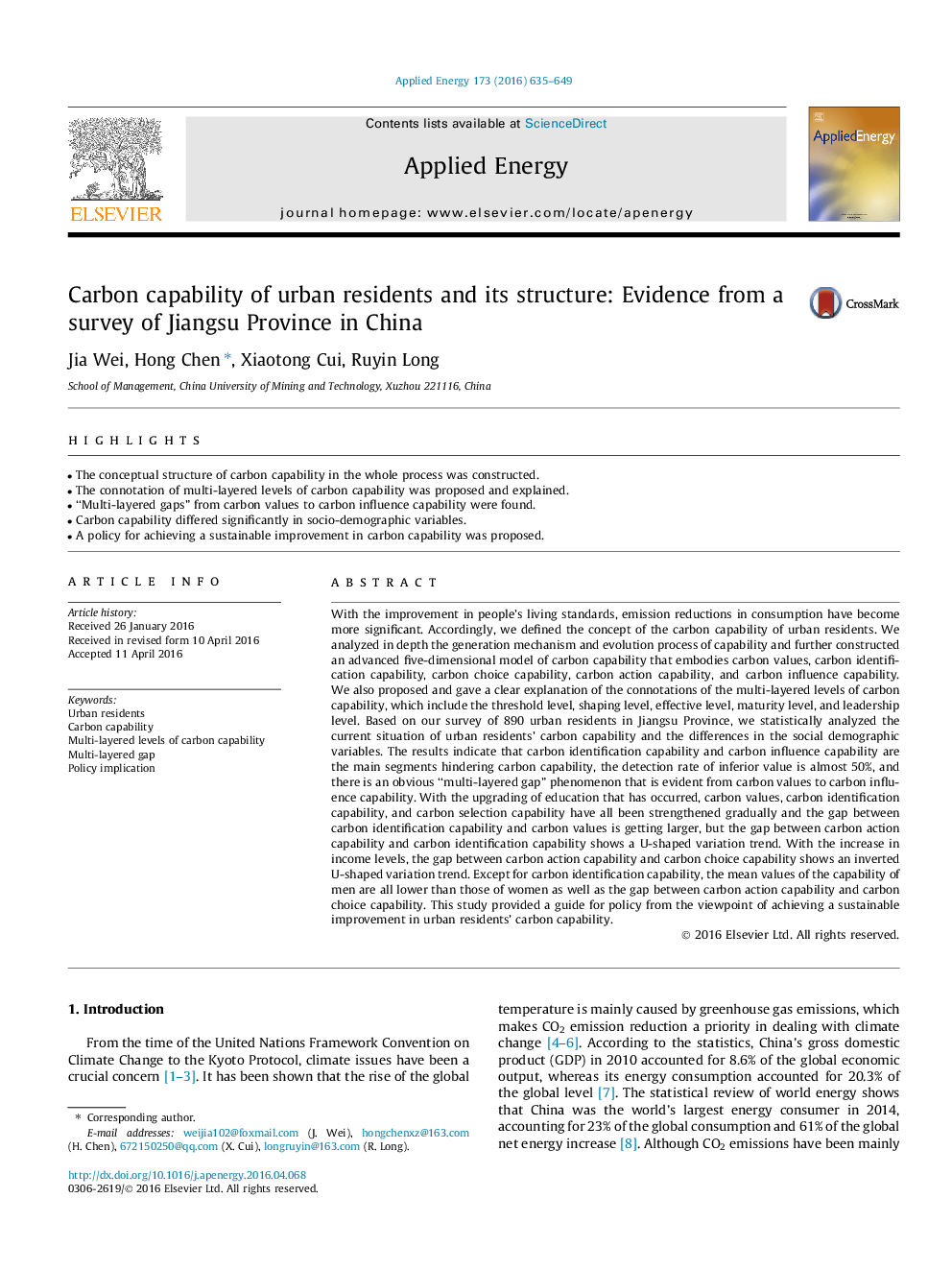| Article ID | Journal | Published Year | Pages | File Type |
|---|---|---|---|---|
| 6683227 | Applied Energy | 2016 | 15 Pages |
Abstract
With the improvement in people's living standards, emission reductions in consumption have become more significant. Accordingly, we defined the concept of the carbon capability of urban residents. We analyzed in depth the generation mechanism and evolution process of capability and further constructed an advanced five-dimensional model of carbon capability that embodies carbon values, carbon identification capability, carbon choice capability, carbon action capability, and carbon influence capability. We also proposed and gave a clear explanation of the connotations of the multi-layered levels of carbon capability, which include the threshold level, shaping level, effective level, maturity level, and leadership level. Based on our survey of 890 urban residents in Jiangsu Province, we statistically analyzed the current situation of urban residents' carbon capability and the differences in the social demographic variables. The results indicate that carbon identification capability and carbon influence capability are the main segments hindering carbon capability, the detection rate of inferior value is almost 50%, and there is an obvious “multi-layered gap” phenomenon that is evident from carbon values to carbon influence capability. With the upgrading of education that has occurred, carbon values, carbon identification capability, and carbon selection capability have all been strengthened gradually and the gap between carbon identification capability and carbon values is getting larger, but the gap between carbon action capability and carbon identification capability shows a U-shaped variation trend. With the increase in income levels, the gap between carbon action capability and carbon choice capability shows an inverted U-shaped variation trend. Except for carbon identification capability, the mean values of the capability of men are all lower than those of women as well as the gap between carbon action capability and carbon choice capability. This study provided a guide for policy from the viewpoint of achieving a sustainable improvement in urban residents' carbon capability.
Keywords
Related Topics
Physical Sciences and Engineering
Energy
Energy Engineering and Power Technology
Authors
Jia Wei, Hong Chen, Xiaotong Cui, Ruyin Long,
